Content [show]
Grow from seed a healthy and fruiting plum is possible. It is a fun process with many details that determine the success of the event.
It is important to choose the right planting material. and properly prepare it for planting, mimicking the natural conditions of development as much as possible.
Selection of planting material
It is important to immediately determine for yourselfthat planting a stone of the plum you like and growing a fruit tree with similar fruits is difficult. This is possible only with vegetative reproduction.
The reason for this is cross-pollination by insects, during which pollen of different varieties is mixed. This changes the genetics of the fetus and the bone.
Often such planting materials give the most unexpected results. Instead of a cultivated plant, a gardener can grow a wild plum with sour and unsuitable fruits in the country. In some cases, fruiting is completely absent.
We bring to your attention the following publications:
- Description of plum variety Chinese early.
- Description of the plum variety Uralskaya red.
- Planting and caring for thorns or thorns.
The varieties and hybrids of plum species differ in the necessary qualities:
- Ussuriyskaya;
- Canadian;
- Chinese.
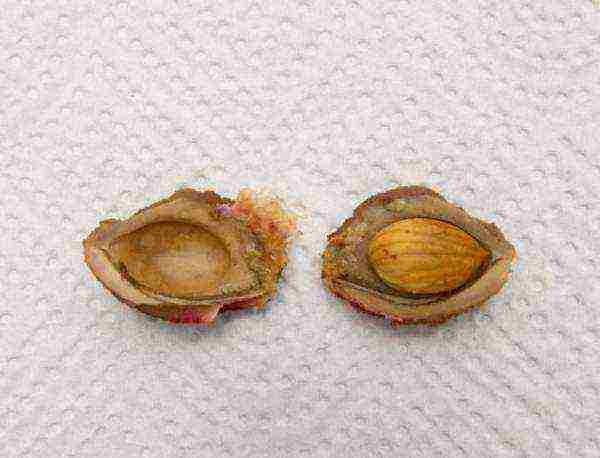
If the purpose of planting a seed is to grow a frost-resistant scion for thermophilic crops, you can plant a stone of any zoned plum variety.
Only when the fruits are fully ripe, a full-fledged embryo is formed in the seed, on which the germination and strength of the plant in the future depends. therefore seeds of ripe fruits are selected for planting, trees adapted to local climatic conditions.
It is better to select a few seeds, this way you can guarantee maximum germination and choose a strong seedling for planting in open ground.
How to germinate a seed: stratification
An important stage in the propagation of stone plums is stratification... This is the keeping of the planting material in cold and humid conditions, which allows the seed to germinate, provokes the growth of the embryo and the subsequent rupture of the shell for its access to light.
As a substrate for stratification, you can choose:
- shredded moss;
- sawdust;
- coarse river sand;
- perlite;
- low-lying peat.
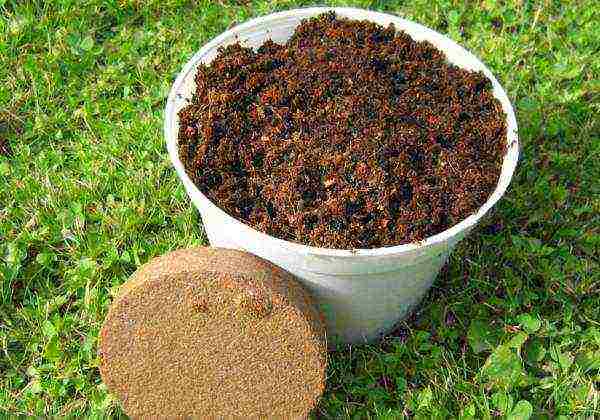
After choosing the substrate, it is moistened and treated with a solution from potassium permanganate and water (5 g / 1 l). The moisture content inside the substrate must be at least 60%.
You can squeeze it in your hand to test it. If everything is normal, a small amount of moisture will be released, and the substrate will retain its shape.
Before placing in the substrate, the bones are kept in water for 3 days.filling them in half the height.
Soaking promotes swelling of the membranes and washes out inhibitors - substances that delay the germination of embryos.
In the tank for stratification, it is necessary to make side holes for air exchange, this will prevent the appearance of fungal diseases. For the same purpose, the bones are placed at a distance from each other. The surface is covered with polyethylene or glass.
Correct stratification - maintaining a certain temperature for periods. These are the stages:
- Warming up... Excerpt of seeds in the substrate for 15 days at a temperature of + 15 ° - + 20 ° C. It is optimal to place the container in any warm place.
- Cooling... The temperature drops to + 1 ° - + 5 ° С. This period lasts 60-80 days. The container with bones is removed to the lower shelf of the refrigerator.
- Pre-sowing... The temperature is lowered to 0 ° -1 ° C for 20-35 days. The container can be stored in a cold basement. The level of germination strongly depends on the observance of this stage.
In this period it is necessary to control moisture... When mold appears, the substrate is sprayed with a 3% solution of potassium permanganate.
The readiness of the bone for planting can be judged on the cracked shell. It is important to plant it as quickly as possible in a comfortable place of temporary development.
Growing a seedling
To plant seeds for seedlings, you need prepare a convenient pot with a diameter of at least 20 cm. The containers are disinfected with a 3% formalin solution.
At the bottom, a drainage layer of expanded clay or broken brick with a layer of 3-5 cm is required, a thin layer of coarse sand and charcoal is laid on top. Thus, the drainage of excess moisture and aeration of the roots is ensured.
These properties are possessed by a substrate of components mixed in equal parts:
- humus;
- leafy earth or peat;
- vermiculite.
0.5 part of calcined river sand or perlite is added to the soil mixture.
The substrate is placed in a pot and watered abundantly. The bone is placed in the center of the container., deepening by 5 cm. After that, the pot must be wrapped in polyethylene. This creates a mild greenhouse environment and the sprout will emerge within 45 days.
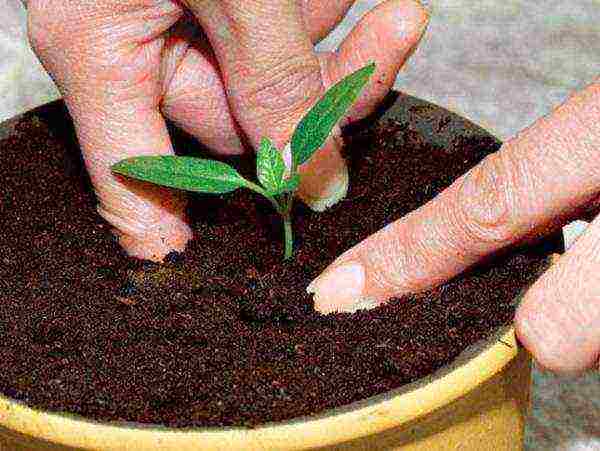
During this period, the container must be ventilated every day, lifting the covering material. Moistening is done with a spray bottle every other day.
For the correct development of the seedling at home, it is necessary to maintain optimal conditions:
- Lighting... The container is placed on a well-lit windowsill without direct sunlight on the seedling. The ideal option is the southwest direction. In darkened rooms, it is advisable to install fluorescent lamps or enhance the reflection of sunlight by side mirrors.
- Microclimate... The optimum temperature for the seedling is + 20- + 25 ° С. It is important to monitor the humidity of the air. In dry rooms, the air around the pot should be sprayed more often.
- Watering... Abundant but rare. It is enough to moisturize twice a week. The water should be at room temperature and must be settled. A tray of water can be placed under the pot until the substrate is completely saturated with moisture.
- Top dressing... From the moment the first shoots appear until the end of the growing season, it is necessary to make three additional fertilizing with nitrogenous fertilizers. To do this, you can use a solution of ammonium nitrate and water (30 g / 10 l). Approximate consumption per plant is 100 ml.
- Picking... In the period from the cotyledon state to the appearance of two true leaves, you need to pinch 1/3 of the root length. This activates the formation of a strong and branched root system. After that, the seedling is planted in a new nutrient substrate, watered abundantly and shaded.
So that a wild culture does not grow from a seedling, it is transplanted into a new soil mixture and into a wider container every three months.A young tree can be transplanted into open ground one year after planting the seed.
Pre-hardening... A week before planting, the seedling is kept in the fresh air for 3-5 hours every day.
Transplanting a seedling into open ground
Ideal for planting plums a well-lit area with a gentle slope facing south or southwest. In such an area, there is good aeration and stable heating of the soil.
On a low-lying area, you will need to form a hill 50 cm high and a base width of 100 cm.
Groundwater should be below 3 m, otherwise anaerobic conditions are created for the roots, which lead to rot and impede full development.

Preparing a site for a future tree
If a seedling transplant is planned for the spring, the plot for the fruit tree is prepared in the fall.
For autumn planting, this must be done in early summer.... During this time, the soil will settle, structure, and complex compounds of minerals will take easily digestible forms.
The plot must be dug up 35 cm and fertilized per 1 m2:
- manure or compost 6 kg;
- superphosphate 60 g;
- potassium salt 30 g.
The upper part of the soil removed from the pit is deposited separately; it will be needed to form the substrate. At a distance of 30 cm from the center of the pit, a stake is inserted, a seedling will be tied to it.
Soil mixture for filling the hole:
- manure 2 buckets;
- river sand 2 buckets;
- superphosphate 30 g;
- potassium sulfate 20 g
The rest is complemented by deposited sod land. At high acidity, 300 g of limestone is added to the soil.
How to plant a seedling correctly
At the bottom of the landing pit form a hill from the prepared soil mixture. During the placement of the seedling, it is necessary to spread all the roots over the surface of the substrate. Bends in the upward direction should be avoided.
By adjusting the height of the location, you need to focus on the root collar, it should be 5 cm above the soil level... This prevents its subsequent deepening under the influence of shrinkage.
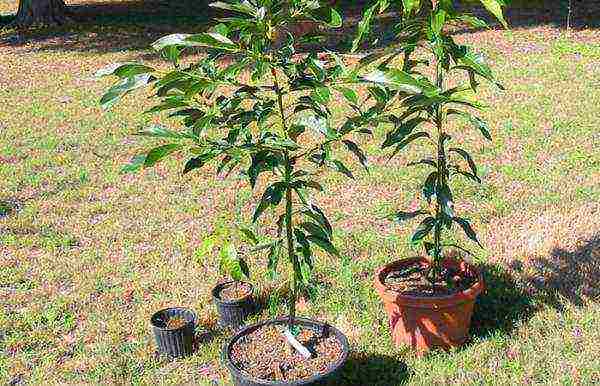
When falling asleep plum roots it is important to prevent the formation of voids... To do this, it is necessary to periodically shake the stem of the seedling.
After planting, the surface of the soil is compacted, the seedling is watered abundantly and tied to the stake with soft material. The trunk circle is mulched with sawdust or peat.
Care after landing in the country
In the first two years of development of a young plum, fertilizers are not needed.... For proper nutrition of the tree, there are enough elements that are introduced into the planting pit. The trunk circle must be kept in a constantly loose state, removing all weeds.
Young trees react especially painfully to damage to the bark. Therefore, it is not necessary to allow friction between the barrel and the stake.
It is important to monitor the appearance of overgrowth at the level of the trunk or from the roots. Excess shoots take away a lot of nutrients and the ability of the seedling to develop fully, so they are immediately cut out.
If the defeat of the seedling is large-scale, you need to apply chemicals: "Karbofos", "Actellik", "Aktara".
The seedling needs provide regular hydration... Water must penetrate up to 40 cm deep. The frequency of watering must be adjusted based on climatic conditions. It is important not to allow severe drying out, to which the plum reacts very painfully.
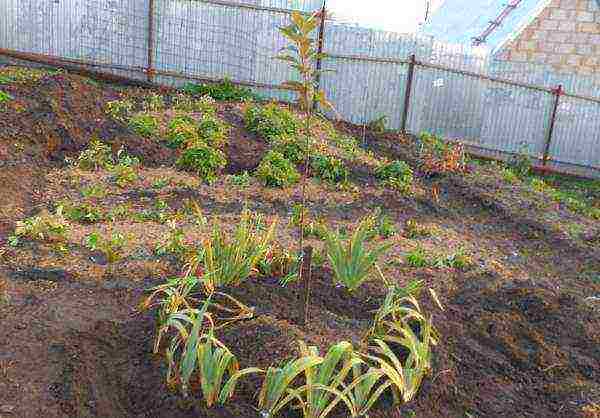
Young plums must be carefully prepared for the first winter.... A layer of mulch is laid at least 30 cm. All branches of the seedling are grouped and tightly fixed to the stake.
Until December you need wrap the plum stem with warm and breathable material... This will prevent the appearance of frost cracks - cracks that appear under the influence of temperature changes. Additionally, the seedling will warm up by pulling up the snow.
Young trees are attractive to rodents, which are especially activated in the winter season in search of food. To protect the seedling, it is covered with spruce branches from all sides. Additionally, they are treated with a mixture of mullein and clay (1: 1), the pungent smell of which repels pests.
Therefore, it is important to follow all the rules of care, periodically carry out preventive work and inspect the tree, the appearance of which always signals internal problems.


